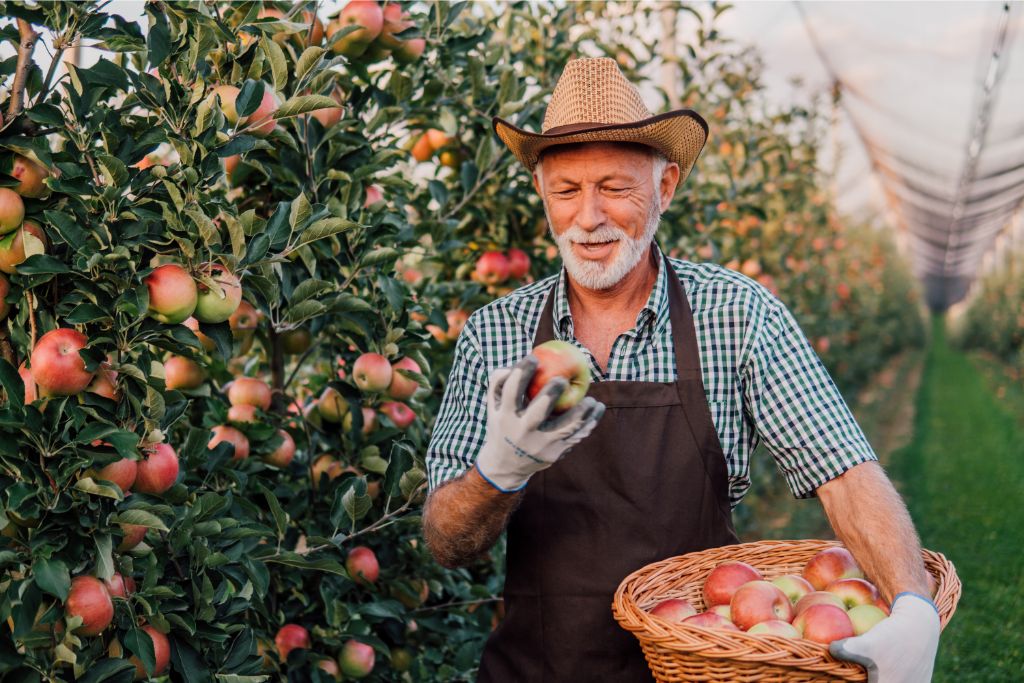Effective Social Media Marketing For Local Farmers

Hey there, local farmer! You’re tirelessly producing top-notch food. It’s a bummer when your goods don’t reach enough buyers.
Here’s where potent social media marketing steps in. Tech skills? Not necessary. You have to understand the game.
Let’s dive into how social media can rev up your business, create direct links with customers, and even outpace those supermarket chains.
Table of Contents
- 1 Understanding Social Media Platforms
- 2 Building Your Online Presence
- 3 Creating Engaging Content
- 4 Leveraging Hashtags and Local Keywords
- 5 Interacting with Customers Online
- 6 Using Social Media for Sales
- 7 Tracking Your Social Media Success
- 8 Case Study: Successful Social Media Campaigns by Farmers
- 9 BONUS
- 10 Frequently Asked Questions
- 10.1 How can farmers protect their online brand reputation?
- 10.2 What specific social media privacy concerns should local farmers be aware of?
- 10.3 How can local farmers collaborate with other local businesses on social media?
- 10.4 How can local farmers use social media to tackle environmental issues?
- 10.5 Are there any legal considerations local farmers need to consider when marketing on social media?
Understanding Social Media Platforms
Local farmers must understand the various social media platforms to market their produce effectively. Platform selection isn’t about choosing the most popular one but identifying where your target customers are active.
Think about it this way: you wouldn’t plant a crop in barren soil, would you? Similarly, promoting organic vegetables on LinkedIn might not yield the best results. Instead, Instagram or Facebook could be more fertile grounds due to their visual nature and broad user base.
Once you’ve selected your platform, audience targeting comes into play. It’s like knowing which crops will thrive in certain conditions— you’ve got to know who’ll appreciate your fresh heirloom tomatoes or artisanal goat cheese. Use demographic information and interests to narrow down your audience.
Remember that each platform has its algorithm; understanding how these work can help boost the visibility of your posts. Engage with followers regularly, post during peak activity hours, and use relevant hashtags—these practices mimic the sound old farming principles of nurturing and tending for growth.
So, brush up on those tech skills! Your farm’s success in today’s digital marketplace depends on it.
Building Your Online Presence
Building your online presence isn’t just about having a website. You’ll also need to engage with customers on various platforms. Social media offers immense opportunities for digital branding and building online partnerships.
As a farmer, it’s crucial to understand how each platform works so you can make the most of them. Here are some important pointers:
- Understand the algorithms: Each platform uses different algorithms that dictate what content gets seen by whom. It’s essential to understand these to maximize your reach.
- Know your audience: Different platforms attract different demographics. Ensure your content is tailored to appeal to the users of each platform.
- Engage actively: The more you interact with your followers, the more engagement you’ll get back. This will boost your visibility on these platforms.
- Leverage Online Partnerships: Collaborating with other brands or influencers can help expand your reach and build credibility.
- Consistent Digital Branding: Keep consistent branding across all platforms – this includes using similar colors, fonts, messaging, etc.
Keep up-to-date with agricultural practices and marketing strategies to provide valuable content for your followers. Building an effective online presence requires consistent effort but will be well worth it in the long run!
Creating Engaging Content
Creating engaging content isn’t just about posting regular updates; you’ve got to understand your audience’s needs and interests to captivate them truly. This means going beyond the usual crop updates or farm equipment photos. It would be best if you considered employing visual storytelling techniques.
Show them the journey from seedling to harvest, and let them experience the life cycle on your farm through well-crafted videos or a series of images.
User-generated content (UGC) is another powerful tool for engagement. Encourage your followers to share their experiences with your products. Whether a photo of a meal made with your produce or an anecdote about visiting your farm stand, UGC provides fresh content and builds a community around your brand.
Remember, each social media platform has quirks and algorithms favoring specific posts. Staying informed can help you tailor your strategy accordingly. For instance, Instagram favours high-quality images and hashtags, while Facebook values longer posts and interactions.
In essence, knowing agricultural practices isn’t enough in this digital age; understanding the dynamics of social media algorithms combined with marketing strategies will take you further in promoting local farming.
You’ll find that using hashtags and specific keywords related to your area can significantly boost your online visibility. Hashtag research is not complex, but you must take it seriously. List your agricultural products or services, then add location-based tags for local flavour. Remember, social media algorithms favour posts with well-utilized hashtags.
Keyword optimization plays an important role as well. Use tools like Google Trends to identify what potential customers in your region are searching for and incorporate those terms into your posts. Think about seasonal trends, too – if it’s an apple-picking season, capitalize on those famous search words in your content.
Don’t forget to engage with other local businesses and influencers who can help spread the word about your farm. Participate actively in their conversations by commenting and using relevant hashtags.
Lastly, always measure the results of your hashtag and keyword strategy – see what works best for driving engagement and adjust accordingly. Remember that patience is key here – success won’t happen overnight, but you will see growth over time with consistent effort.
Interacting with Customers Online
In today’s digital age, your farm’s online presence can be as fruitful as the richest soil.
Responding to comments and messages isn’t just about being polite—it’s a strategic move that boosts engagement and enhances visibility in social media algorithms.
Moreover, hosting live Q&A sessions provides real-time interaction, allowing you to showcase your agricultural expertise while promoting your brand—so let’s dig deeper into these tactics.
Responding to Comments and Messages
It’s crucial to promptly and professionally respond to comments and messages on your social media platforms. Demonstrating comment moderation techniques can be a game-changer in building a loyal customer base for your farm produce.
Direct messaging etiquette also plays an essential role in maintaining the goodwill of consumer relationships.
Here are three steps to guide you:
- Acknowledge: Always acknowledge comments, whether positive or negative. This shows that you value your customers’ opinions.
- Respond Professionally: Ensure your responses are respectful and informative, and maintain the brand voice consistent with agricultural practices.
- Private Conversations: Use direct messaging for detailed conversations or addressing sensitive issues.
Hosting Live Q&A Sessions
Hosting live Q&A sessions can be a great way to engage with your audience and answer their queries about your farm produce in real-time. This helps you build trust and showcases your expertise in addressing farming challenges.
Through these interactive sessions, you’ll highlight sustainable practices that differentiate you from other farmers. You’d want to prepare beforehand by predicting questions they might ask. Here’s a table of possible topics:
| Topic | Potential Questions | Your Response |
|---|---|---|
| Sustainable Practices | How do you ensure sustainability on your farm? | Discussing organic methods, crop rotation, etc. |
| Farming Challenges | What are the common issues faced? How are they resolved? | Talk about weather-related risks, pests and how you mitigate them |
| Produce Quality & Availability | When is the best time for certain crops? What makes them unique? | Share info about harvest seasons and unique characteristics |
Using Social Media for Sales
You’re on the cusp of harnessing social media to its fullest potential. Now it’s time to focus on promoting your farm-fresh products and collaborating with local influencers.
Understanding the nuances of digital marketing in the agriculture sector is key. You’ve got to master how best to showcase your produce online and leverage social media trends that align with your brand.
With savvy strategies like engaging local influencers who already have a solid follower base, you’ll be able to reach new customers more organically. This will boost sales and visibility for your farming business.
Promoting Your Products
Leveraging Instagram’s visual appeal, you can effectively showcase your farm’s fresh produce. Product photography is key; ensure your images are vibrant and inviting. Identify your target audience – who appreciates fresh, locally sourced goods? Engage them with compelling content.
Consider these strategies:
- Product Spotlight: Highlight unique items or bestsellers.
- Farm-to-Table Journey: Showcase the process from growth to harvest.
- Seasonal Updates: Keep followers informed about what’s ripe and ready.
- Customer Testimonials: Share positive reviews and experiences.
- Community Involvement: Show how you’re contributing locally.
Collaborating with Local Influencers
By reaching out to popular influencers in your area, you can tap into their following and increase visibility for your fresh produce. Influencer selection should focus on those who align with your brand ethos and have a genuine connection to their audience.
The partnership benefits are twofold. Firstly, you’re gaining exposure through their established platform. Secondly, the influencer’s endorsement can increase consumer trust in your products.
| Influencer Selection Criteria | Partnership Benefits |
|---|---|
| Relevance to Your Brand | Increased Exposure |
| Engaged Audience | Trust Building |
| Authenticity | Collaboration Opportunities |
| Local Presence | Support Local Economy |
| Content Quality | Enhanced Brand Image |
Tracking Your Social Media Success
As you delve deeper into harnessing the power of social media for your agribusiness, it’s crucial to stay ahead by using analytics tools and making adjustments based on those results.
It’s not just about posting updates on what’s growing in your fields or sharing vibrant photos of your latest harvest; it’s about understanding how these posts perform and tweaking your strategy accordingly.
Using Analytics Tools
Using analytics tools in your social media marketing strategy, you can better understand your audience’s behavior. These tools allow you to leverage predictive analytics and data visualization techniques for making informed decisions.
- Predictive Analytics: By analyzing past trends, you can predict future behaviors. This allows you to plan your posts during peak engagement times.
- Data Visualization: Complex data transformed into easy-to-understand graphs and charts helps identify patterns quickly.
- Audience Behavior: Understanding what content resonates with your followers aids in curating relevant posts.
- Engagement Metrics: Tracking likes, shares, comments, and clicks helps determine the success rate of each post.
Adjusting Your Strategy Based on Results
Once you’ve digested the data from your analytics tools, it’s time to adjust your strategy accordingly. Performance-driven changes aren’t just about reacting to what didn’t work and doubling down on what did.
Look at engagement rates for posts promoting different crops or farming practices. Which resonated most with your audience? That’s where you should focus your energy.
Don’t forget that social media algorithms favour active and engaging content. If a post about sustainable irrigation methods gets a lot of shares, create more content around that topic. Make result-oriented adjustments – If farmer profiles are popular, feature more local farmers in your posts.
Case Study: Successful Social Media Campaigns by Farmers
Let’s dive into some successful social media campaigns by farmers to see what you can learn from them. You might be surprised by the creativity and effectiveness some local farmers have shown, proving that agriculture and digital marketing can make a fruitful pairing.
First off, take note of the campaign analysis. This involves scrutinizing every detail of your campaign – from post timing to audience engagement. One farmer’s testimonial revealed how tweaking his posting schedule according to peak user activity times boosted his reach significantly.
Next, let’s talk about farmer testimonials themselves. They’re an authentic way to build trust with potential customers online. A case in point is a dairy farmer who shared stories about her daily farm life – the triumphs and the challenges. Her candid posts resonated with many consumers, who felt more connected to the brand.
Lastly, remember that trends are your friends! Observe current social media fads or viral topics and see if they align with your farming practices. For instance, one organic vegetable farm capitalized on the ‘farm-to-table’ trend effectively, garnering thousands of followers.
BONUS
Maximize your impact as a local farmer with OnlySocial’s essential Post Planning and Scheduling function. Seamlessly plan and schedule your posts across all social networks, ensuring consistent and strategic content delivery. With unlimited posting and the ability to manage unlimited social profiles, you can expand your online presence without limitations. Don’t miss out on optimizing your social media strategy. Sign up for a commitment-free 7-day trial today.
Frequently Asked Questions
How can farmers protect their online brand reputation?
Protect Your Online Brand Reputation with these easy steps. First, adopt Reputation Management Strategies. They’re your armour! Uphold Brand Authenticity Practices. Create a connection, and interact positively with your online audience. See negative feedback? Address it quickly! Make sure your content is accurate. It should mirror your farming processes.
Stay alert! Data breaches could expose your farm’s private details.
It’s crucial to have robust cybersecurity measures. They protect both personal and business data.
Do you know who can access your social media accounts?
Be mindful of this. Limiting access reduces exposure and risk.
Take advantage of cross-promotion strategies—collaborate with local businesses on social media. Enhance your community involvement with shared promotions or events. This collaboration boosts your visibility, offering benefits for everyone. It’s a great way to support local shopping and farming.
You can highlight eco-friendly farming methods on social media. Share posts about these practices, showing their benefits. Why not ignite an eco-awareness campaign? Let’s get people talking and trending. You’re not just raising awareness. You’re also attracting business to your green operation.
Surely! You must adhere to Advertising Regulations and honour Content Copyright on social media. Check that your marketing material doesn’t violate others’ rights. It’s also key to follow every platform’s advertising guidelines.



